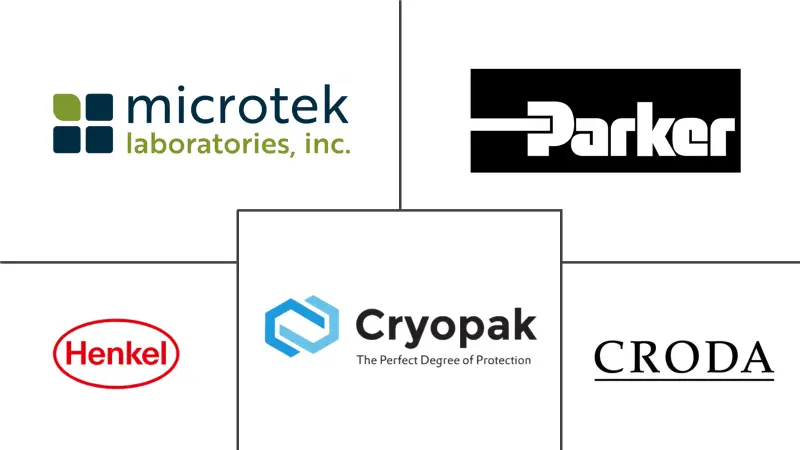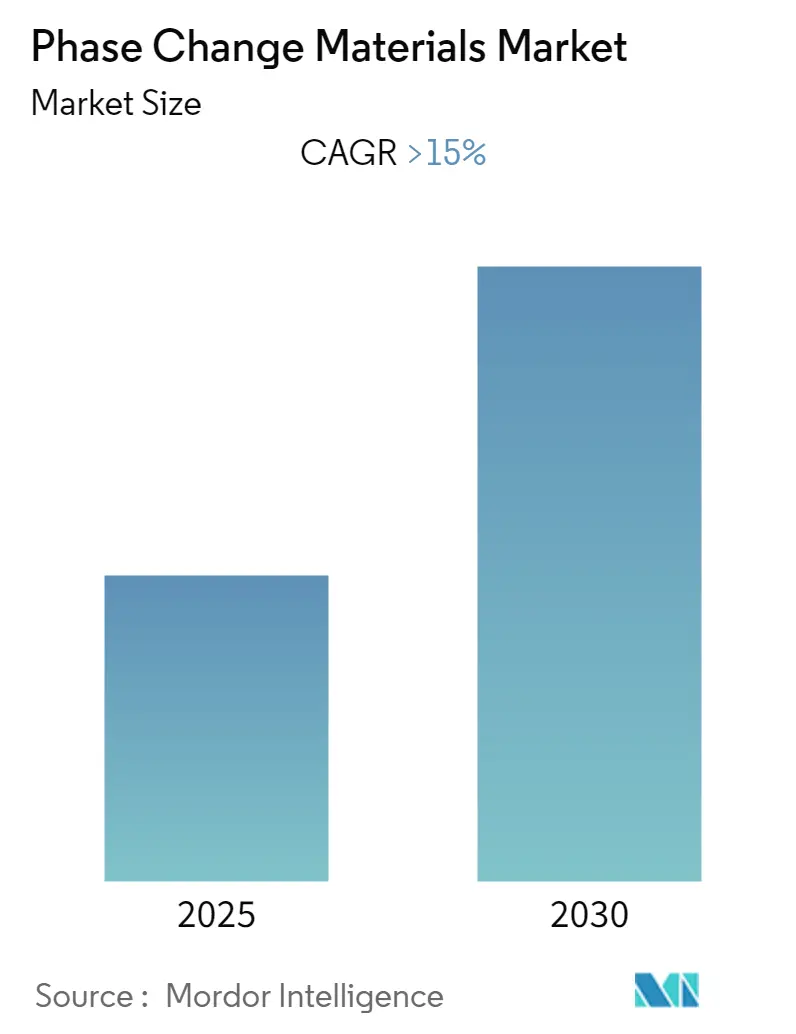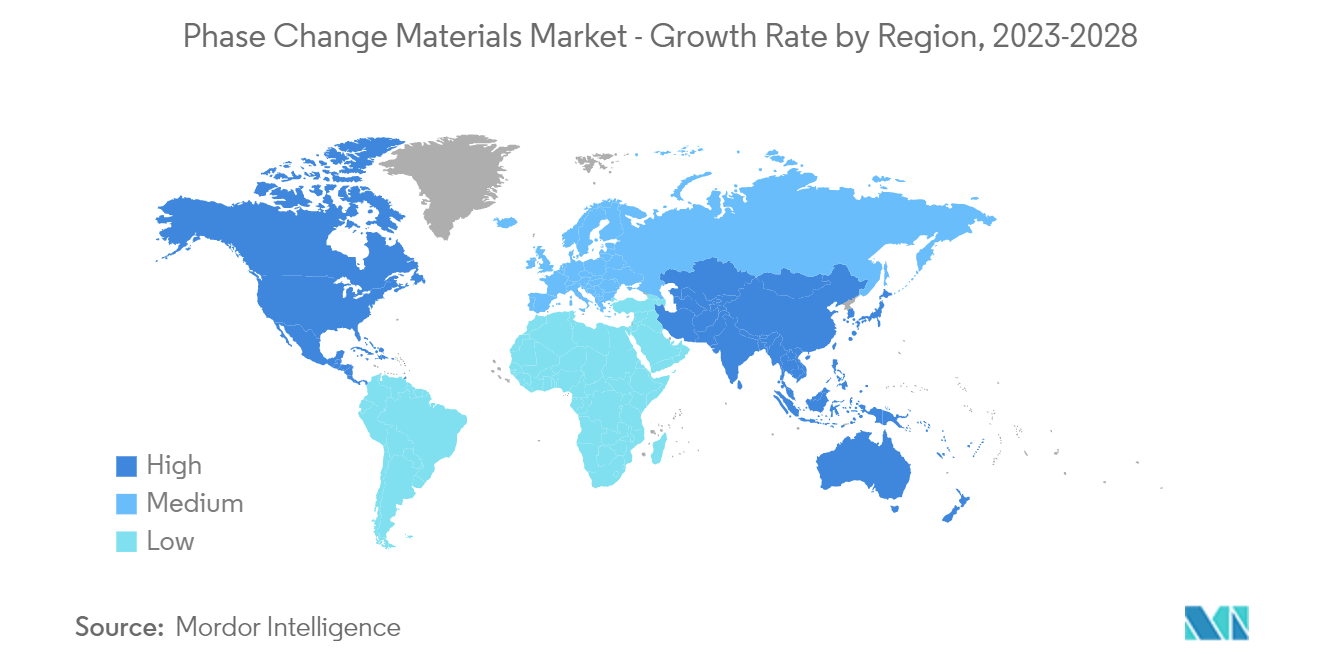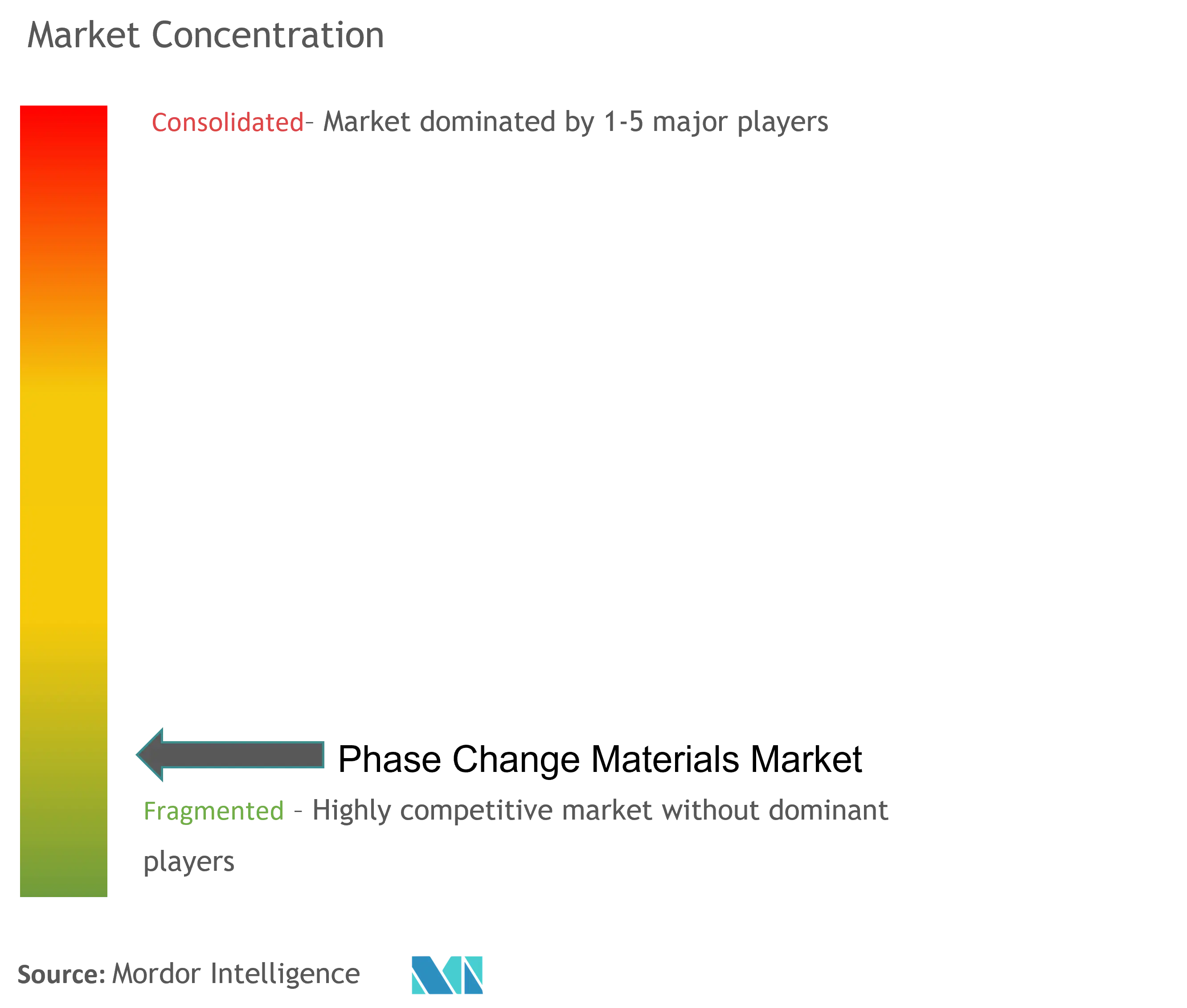Phase Change Materials Market Analysis
The Phase Change Materials Market is expected to register a CAGR of greater than 15% during the forecast period.
The phase change materials market was affected negatively due to the COVID-19 pandemic. The weakening transportation industry and a brief halt in construction activity due to the pandemic lockdown had a detrimental impact on the phase change materials market. However, the market reached pre-pandemic levels and is expected to grow steadily during the forecast period.
- The expanding global trend toward energy conservation and sustainable development is primarily driving the market. Because of the expanding construction sector, the organic product segment is also anticipated to propel the market ahead.
- However, the hazardous nature of phase change materials is expected to hinder the market's growth.
- The development of phase change thermal interface material and rising awareness of bio-based phase change materials is likely to act as an opportunity in the future.
- The continent of Europe long dominated the market. However, the Asia-Pacific region is anticipated to achieve the greatest CAGR throughout the projection period.
Phase Change Materials Market Trends
Building and Construction Industry to Dominate the Market
- The rising emphasis on green building and energy conservation boosted the demand for highly effective and novel construction materials. As a result, phase change materials are employed in several applications, such as under-floor electric heating systems, PCM-filled glass windows, and thermally efficient concrete.
- Thermal comfort in buildings is where PCM is primarily used. PCM can regulate temperature and reduce heat gain or loss via building walls. The market for phase change materials is growing due to the growing usage of these materials in building products, including wallboards, roofing, concrete, and polymers like polyolefin elastomers and polypropylene to increase thermal efficiency.
- The US Census Bureau estimates that the US spent USD 1,809.8 billion on construction-related expenses in December 2022. Comparing December 2022 to December 2021, when the total amount spent was USD 1,681.0 billion, the construction sector rose roughly 7.7%. It, in turn, would help the market for phase change materials to grow.
- Germany is Europe's largest construction market, with the most extensive building stock on the continent. One of the main goals the German government established for the nation was affordable housing. The government plans to build 400,000 new housing units every year, 100,000 of which would be publicly subsidized.
- Germany had also given the go-ahead for constructing 25,399 dwellings for October 2022. Compared to October 2021, this implies a decrease in building permits of 4,198, or 14.2%, according to the Federal Statistics Office (Destatis). Moreover, 297,453 residential building licenses were issued between January and October 2022.
- Additionally, strict US Environmental Protection Agency (EPA) laws surrounding GHG emissions are driving up consumer demand for sustainable energy sources in North America, driving up the need for phase change materials.
- The expansion and proliferation of the building & construction sector are anticipated to be the main driver of the market for phase change materials, thus driving the market forward.
Asia-Pacific Region to Register the Highest Growth
- Asia-pacific region is expected to grow most during the forecast period, owing to the increase in demand from the end-user industries, including building and construction, packaging, textile, electronics, and transportation.
- Due to factors including developing e-commerce titans in the country and a growing per capita income, China is the world's most significant consumer of packaging. With around 60% of the market share in China, food packaging is a substantial participant in the packaging sector. The entire amount of packaging in China is anticipated to reach 447 billion units in 2023, according to Interpak, under the food packaging category.
- According to the Packaging Industry Association of India (PIAI), the Indian packaging industry is expected to grow at 22% during the forecast period. Moreover, the Indian packaging market is expected to reach USD 204.81 billion by 2025, registering a CAGR of 26.7% between 2020 and 2025.
- The fourth quarter of 2022 saw an increase in China's construction output of around 50% over the previous quarter (USD 27.6 billion), reaching an estimated CNY 276 billion (about USD 40 billion), according to the National Bureau of Statistics of China. Due to the nation's emphasis on energy-efficient structures, phase change materials are also widely used in construction.
- The Japanese construction industry is also expected to bloom due to the events expected to be hosted in the country. For instance, Osaka will host the World Expo in 2025. The construction is mainly driven by redevelopment and recovery from natural disasters. Two high-rise towers for Tokyo Stations, a 37-story, 230m tall office tower initially planned to be completed in 2021, and a 61-story, 390m tall office tower is due for completion in 2027.
- The electronics sector also makes extensive use of phase change materials. The Japan Electronics and Information Technology Industries Association (JEITA) anticipated that the total production value of the electronics industry in Japan would be over JPY 10.1 trillion (84.5 USD billion) as of November 2022, roughly 100.7% of the amount from the previous year. Up to November of last year, Japan's electronics exports climbed by about 15% over the same period in the prior year.
- All the above factors will likely increase the demand for phase change materials over the forecast period.
Phase Change Materials Industry Overview
The phase change materials market is fragmented. The major companies (not in any particular order) include Cryopak, Microtek Laboratories Inc., Henkel AG & Co. KGaA, Parker Hannifin Corp., and Croda International Plc.
Phase Change Materials Market Leaders
-
Microtek Laboratories Inc.
-
Henkel AG & Co. KGaA
-
Parker Hannifin Corp.
-
Croda International Plc
-
Cryopak
- *Disclaimer: Major Players sorted in no particular order
Phase Change Materials Market News
- October 2022: Shanghai Polytechnic University researchers announced the development of a new efficient phase change microcapsules for storing solar energy. The newly designed microcapsule demonstrated enhanced heat transfer, storage properties, and high-performance photothermal conversion.
- September 2022: Sinomax USA announced the launch of the first bio-based phase change material in foam bedding. This foam bedding technology addresses many vital attributes, which include washability. This Phase Change Material cooling technology is called Bio Frost. Biofrost offers a more sustainable cooling solution at the same or better cooling power and more affordable costs than other PCMs, as stated by the company.
Phase Change Materials Industry Segmentation
A phase change material is a substance that releases/absorbs sufficient energy at phase transition to provide helpful heat/cooling. PCMs can provide district cooling and thermal buffer swings in buildings and store solar thermal energy for short-term or seasonal applications. The market is segmented by product type, encapsulation technology, end-user industry, and geography. By product type, the market is segmented into organic, inorganic, and bio-based products. Regarding encapsulation technology, the market is segmented into macro, micro, and molecular. End-user industry segmentation includes building and construction, packaging, textiles, electronics, transportation, and other end-user industries. The report also covers the market size and forecasts in 14 countries across major regions. The report offers market size and forecasts for phase change materials in terms of revenue (USD million) for all the above segments.
| By Product Type | Organic | ||
| Inorganic | |||
| Bio-based | |||
| By Encapsulation Technology | Macro | ||
| Micro | |||
| Molecular | |||
| By End-user Industry | Building and Construction | ||
| Packaging | |||
| Textiles | |||
| Electronics | |||
| Transportation | |||
| Other End-user Industries | |||
| Geography | Asia-Pacific | China | |
| India | |||
| Japan | |||
| South Korea | |||
| Rest of Asia-Pacific | |||
| North America | United States | ||
| Canada | |||
| Mexico | |||
| Europe | Germany | ||
| United Kingdom | |||
| Italy | |||
| France | |||
| Rest of Europe | |||
| Rest of the World | Brazil | ||
| Saudi Arabia | |||
| South Africa | |||
| Other Countries | |||
Phase Change Materials Market Research FAQs
What is the current Phase Change Materials Market size?
The Phase Change Materials Market is projected to register a CAGR of greater than 15% during the forecast period (2025-2030)
Who are the key players in Phase Change Materials Market?
Microtek Laboratories Inc., Henkel AG & Co. KGaA, Parker Hannifin Corp., Croda International Plc and Cryopak are the major companies operating in the Phase Change Materials Market.
Which is the fastest growing region in Phase Change Materials Market?
Asia Pacific is estimated to grow at the highest CAGR over the forecast period (2025-2030).
Which region has the biggest share in Phase Change Materials Market?
In 2025, the Europe accounts for the largest market share in Phase Change Materials Market.
What years does this Phase Change Materials Market cover?
The report covers the Phase Change Materials Market historical market size for years: 2019, 2020, 2021, 2022, 2023 and 2024. The report also forecasts the Phase Change Materials Market size for years: 2025, 2026, 2027, 2028, 2029 and 2030.
Our Best Selling Reports
Phase Change Materials Industry Report
The global advanced phase change material market is witnessing significant growth, driven by the increasing demand for energy-efficient solutions across various sectors such as building and construction, packaging, textiles, electronics, and transportation. The focus on reducing greenhouse gas emissions and enhancing comfort through temperature control has led to a high demand for phase change materials (PCMs), particularly organic types known for their environmental friendliness and versatility.
Phase change material suppliers play a crucial role in meeting this demand, with the building and construction segment utilizing PCMs to boost thermal mass, regulate indoor temperatures, and secure green building certifications, thus driving energy savings and sustainability. The Asia-Pacific region is expected to see the fastest growth due to rapid industrialization, urbanization, and the expansion of the cold chain logistics industry.
Despite challenges like high initial costs and the need for greater awareness and standardization, the phase change materials market offers ample opportunities for innovation and application in energy-efficient solutions. Detailed market analysis reveals significant market share and market size, with industry reports providing comprehensive insights into market trends, market growth, and market forecast.
The industry analysis highlights the importance of industry information, industry outlook, and industry research in understanding the market dynamics. Industry sales, industry size, and industry statistics are crucial for gauging the market's performance. Market data, market review, and market segmentation offer valuable insights into the diverse applications and potential of phase change materials.
Market value and market predictions indicate a positive trajectory for the phase change materials market, with market leaders driving innovation and adoption. The report example and report pdf provide an in-depth industry overview, showcasing the market's potential and future prospects. Research companies play a vital role in providing accurate and up-to-date industry information, further aiding in strategic decision-making and market expansion efforts.







